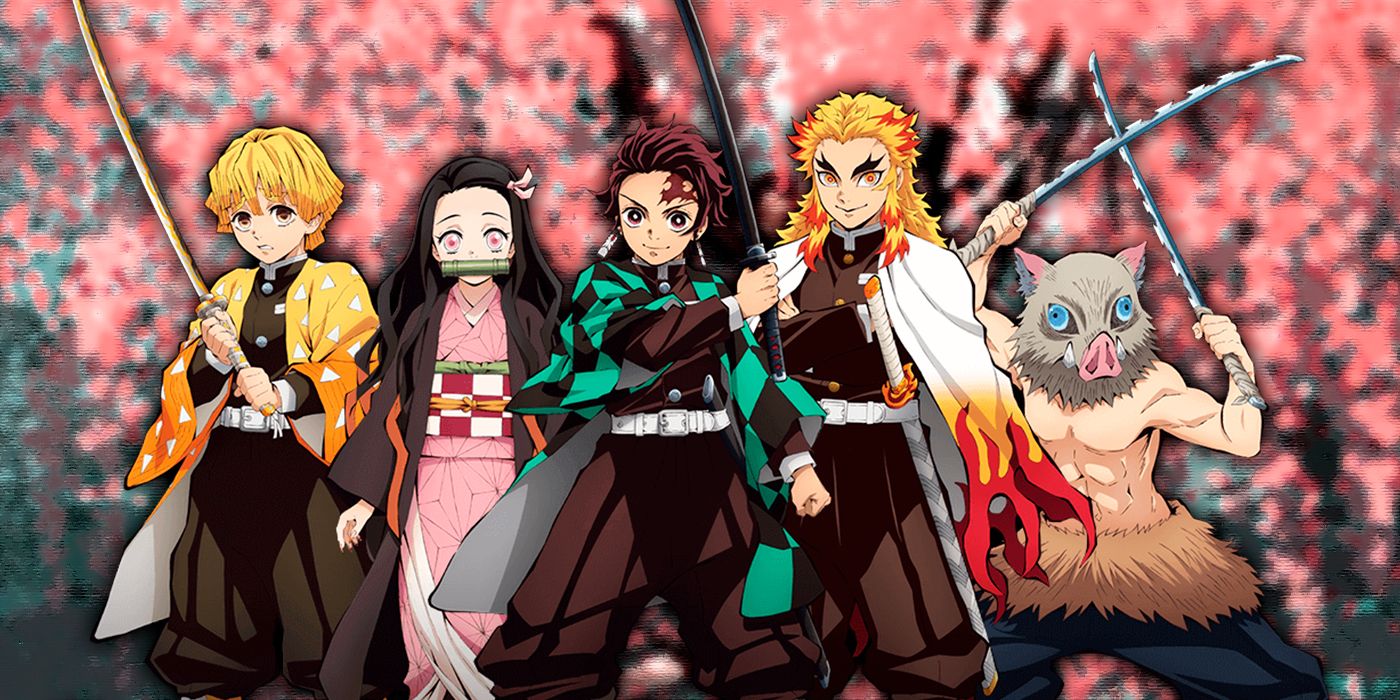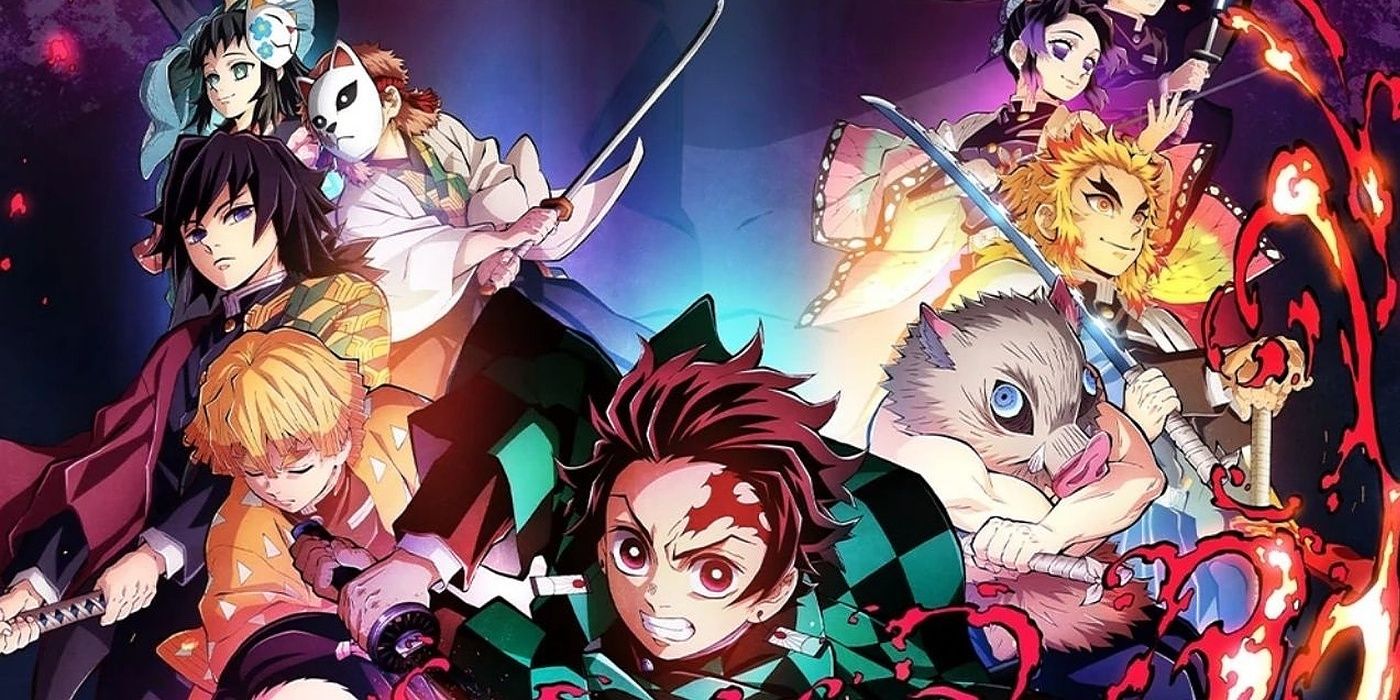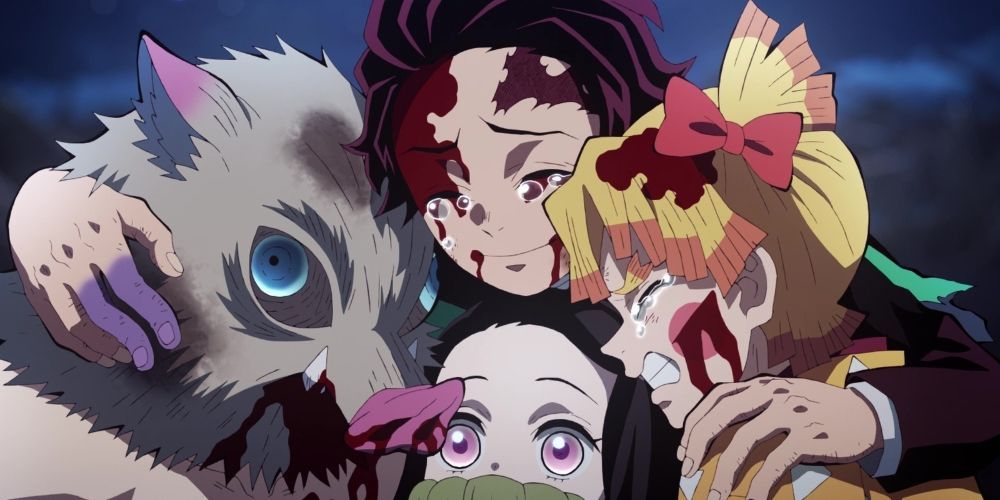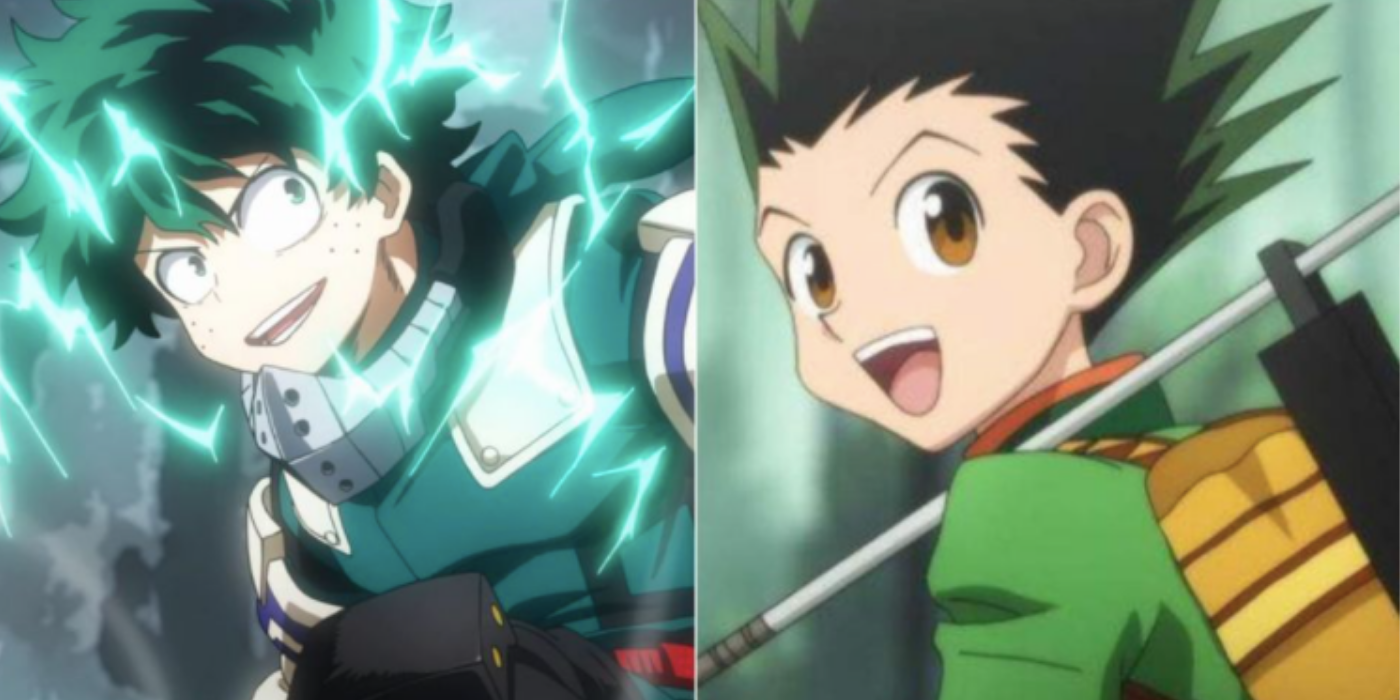Demon Slayer has made its mark as one of the most popular mainstream shonen anime of the last decade. From its gorgeous animation to its creative worldbuilding, the series has epitomized what it means to be a successful shonen.
One of its greatest strengths is found in its strong but limited cast of characters. As the story moves through its different arcs and introduces new Hashira and Demons, it maintains its focus on its protagonists Tanjiro, Nezuko, Zenitsu and Inosuke and their development through the narrative. While focusing on a main core of characters certainly isn't rare for a shonen anime, Demon Slayer sets itself apart from titles like My Hero Academia by never straying from its commitment to that focus and using its additional characters to support the growth of its most important ones.
Demon Slayer's Storytelling Format
Demon Slayer's story structure is relatively simple. In every new arc, Tanjiro and his crew find themselves in a new part of the world and face either one or multiple Demon threats on their path to eventually find Muzan Kibutsuji. Their enemies are notably stronger than the last they've encountered, so all of them must become stronger themselves through the arc through either training or discovering new techniques. During this process, they also befriend new allies, the most notable being a Hashira who both teaches the cast and engages the main threat of the arc. By the arc's end, Tanjiro, Nezuko, Zenitsu and Inosuke have all evolved either physically or emotionally and are ready to face the next challenge ahead.
This is a basic anime formula seen in numerous other shonen titles, but what sets Demon Slayer apart is that it never gets bogged down by the introduction of its side characters. Often, only a primary Hashira and Upper Moon Demon are introduced, along with their backstories, and have a lasting impression on the cast. The rest of the arc is dedicated to focusing on Tanjiro and the other primary characters, never losing that focus. The audience can clearly see the struggles that each character faces and how their journey develops throughout the course of the series.
In Demon Slayer's "Mugen Train" arc, for instance, while Rengoku, Akaza and Lower Moon One were all characters introduced and given some attention, the arc used each character's dream sequences to reveal more about them and focus on their reactions to the events of the arc. It was the same thing for the "Entertainment District" arc, as while Tengen, Gyutaro and Daki all took up significant screen time, the story was still centered around the development of its main cast. This provides a level of clarity for its audience that is often missing when a shonen anime insists on adding a slew of new characters, each with their own storylines, to the ensemble cast in every single arc.
How Does Demon Slayer's Cast Develop?
While Demon Slayer's main cast isn't particularly complicated, this simplicity plays a big part in what makes it appeal to the viewer. Tanjiro is a fundamentally kind-hearted human who is able to sympathize with even the most horrifically vile enemies -- yet unlike other shonen protagonists, he doesn't let compassion get in the way of him doing the right thing and is able to kill a mass murdering Demon without a second thought. Zenitsu is a whiny crybaby for half his scenes and the coolest character in the anime in the other half, and yet both sides share a deep sense of justice and a desire to protect the weak. Inosuke starts the series as a loner who feels like anyone else is only in his way, and through Tanjiro and Zenitsu learns that becoming strong means working with others.
These may not be complex character traits, but they're enough to form a starting point for why the audience should be invested. Each character has clear goals that are easily identifiable, and every arc shows their progress toward that goal. Tanjiro wants to find Muzan and return his sister to normal, Inosuke wants to become stronger and Zenitsu simply gets dragged along for the ride. There are no side missions or side characters to distract or detour from the series' main focus. In every episode of Demon Slayer, it's obvious who the protagonists are and why the audience should care about them, and the anime itself shows that it knows where it's going and where it wants to take its characters. In a genre bloated by filler and side characters that take up too much time and relevance, Demon Slayer's dedication to its main cast is a breath of fresh air.
Comparing Demon Slayer to Other Shonen Anime
A common feature of many shonen anime is their ever-growing cast. My Hero Academia is the best example of an anime with a cast too large for its own good. Class 1A alone has 20 students, all with their individual personalities and relationships with one another that need screen time to display. Class 1B, as well as other students like Mirio and those from Shiketsu High School, receive their fair share of focus as well. Then there are the numerous Pro Heroes that the story has given more and more attention to, along with the villains both long-term and arc-specific that need development. Unlike Demon Slayer, each new arc of My Hero Academia introduces and attempts to give focus to a plethora of new characters.
While the stories of characters like Shinso and Gentle Criminal can be engaging and emotionally effective, they also distract from the primary characters that the audience wishes to see. After their introduction, these characters also often recede into the background, as the story inevitably realizes it must recenter itself around Deku. There simply isn't enough room in the narrative for every introduced character to be given the respect and attention their story deserves past their initial introduction, leading to a bloated cast of characters that are forcibly left behind.
Hunter x Hunter takes a similar approach with its characters, although the way it develops its side characters is more detailed. The "Chimera Ant" arc in particular spends full episodes dedicated to the side stories of minor Chimera Ants and hunters instead of showing major characters like Gon and Killua. There's nothing inherently wrong with this, and it can lead to the feeling of a grander and fuller world. However, there is some sense of lack of focus when an anime spends so much time on one-off characters and their side plots. Demon Slayer's refreshing insistence on telling the story of its main four and using character introductions to specifically complement their journeys is one of its more unique attributes, and a major part of what makes it so easy to enjoy.




